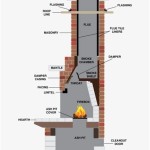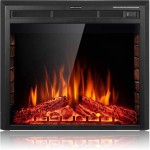Double-Sided Indoor/Outdoor Fireplaces: Bridging Spaces with Warmth and Style
Double-sided indoor/outdoor fireplaces represent a sophisticated architectural feature that seamlessly integrates indoor and outdoor living spaces. These fireplaces are designed with openings on two opposing sides, allowing them to be enjoyed from both within the home and from an adjacent outdoor area such as a patio, deck, or garden. This innovative design not only provides a functional heating solution but also acts as a stunning visual focal point, enhancing the ambiance and value of a property.
The integration of indoor and outdoor spaces has become increasingly popular in contemporary home design, driven by a desire to maximize living areas and create a more fluid connection with nature. Double-sided fireplaces perfectly embody this trend, offering a unique opportunity to extend the comfort and warmth of the indoors to the outdoors, facilitating year-round enjoyment of both environments. This article will explore the various aspects of double-sided indoor/outdoor fireplaces, including their design considerations, functional benefits, installation requirements, and maintenance needs.
Design Considerations: Aesthetics and Functionality
The design of a double-sided indoor/outdoor fireplace requires careful consideration of both aesthetic appeal and functional performance. The fireplace needs to complement the architectural style of both the interior and exterior spaces, creating a cohesive and harmonious visual transition. This involves selecting appropriate materials, finishes, and overall design elements that align with the existing decor and landscape. The design process also necessitates careful planning of the fireplace's dimensions, proportions, and placement to ensure optimal heat distribution and visual impact in both areas.
Material selection is a critical aspect of the design process. Common materials used in double-sided fireplaces include brick, stone, concrete, and metal. Brick offers a classic and timeless aesthetic, while stone provides a more natural and rustic feel. Concrete can be molded into various shapes and textures, offering versatility in design. Metal, often stainless steel or weathering steel (Corten), provides a modern and industrial look. The choice of material should be based on the desired aesthetic, as well as the durability and weather resistance of the material, particularly for the outdoor side of the fireplace.
The style of the fireplace can range from traditional to contemporary, depending on the homeowner's preferences and the architectural style of the home. Traditional designs often feature ornate detailing, such as carved mantels and decorative fireboxes. Contemporary designs, on the other hand, tend to be more minimalist and streamlined, with clean lines and simple geometric shapes. The overall design should seamlessly integrate with the surrounding architecture, enhancing the aesthetic appeal of both the indoor and outdoor spaces.
Functionality is another key consideration in the design process. The fireplace needs to be designed to provide adequate heat output for both the indoor and outdoor areas. The size of the firebox, the type of fuel used (wood, gas, or electric), and the efficiency of the fireplace all contribute to its heating performance. Proper ventilation is also essential to ensure safe and efficient operation, preventing smoke from entering the home or outdoor area. The design should also incorporate features that enhance usability, such as easy access for loading fuel and cleaning the firebox.
Furthermore, the design must adhere to all relevant building codes and safety regulations. This includes ensuring that the fireplace is properly installed and vented, and that it meets all fire safety standards. Consulting with a qualified architect or contractor is essential to ensure that the fireplace is designed and installed safely and in compliance with all applicable regulations.
Functional Benefits and Value Enhancement
Double-sided indoor/outdoor fireplaces offer a range of functional benefits that enhance the comfort and enjoyment of both indoor and outdoor living spaces. One of the primary benefits is the ability to provide heat to both areas simultaneously. This allows homeowners to extend their outdoor living season, enjoying their patios or decks even during cooler months. The fireplace creates a warm and inviting atmosphere, making it possible to entertain guests outdoors or simply relax and enjoy the ambiance of a crackling fire.
Beyond providing heat, double-sided fireplaces also serve as a visual focal point, adding aesthetic appeal to both the indoor and outdoor spaces. The flickering flames and the warm glow of the fire create a captivating ambiance, enhancing the overall atmosphere of the home. The fireplace can also serve as a natural divider between the indoor and outdoor areas, defining the boundaries of each space while maintaining a sense of connection and flow.
The installation of a double-sided fireplace can also increase the value of a property. It is a desirable feature for many homebuyers, as it offers a unique and luxurious amenity that enhances the enjoyment of the home. The fireplace can add significant value to a property, particularly in regions with mild climates where outdoor living is popular.
In addition to the functional and aesthetic benefits, double-sided fireplaces can also contribute to energy efficiency. By providing a supplemental heat source, the fireplace can reduce the reliance on central heating systems, potentially lowering energy costs. This is particularly true for gas and electric fireplaces, which can be operated on demand and adjusted to provide the desired level of heat. Wood-burning fireplaces can also be energy-efficient when used with properly seasoned wood and efficient burning techniques.
Moreover, the presence of a fireplace can enhance the overall comfort and well-being of the occupants. The warmth and ambiance of a fire can create a sense of relaxation and tranquility, promoting stress relief and improving overall mood. The fireplace can also serve as a gathering place for family and friends, fostering social interaction and creating lasting memories.
Installation Requirements and Maintenance Needs
The installation of a double-sided indoor/outdoor fireplace is a complex process that requires careful planning and execution. It is essential to consult with a qualified contractor or architect to ensure that the fireplace is installed safely and in compliance with all applicable building codes and regulations. The installation process typically involves several stages, including site preparation, framing, venting, and finishing.
Site preparation is the first step in the installation process. This involves preparing the area where the fireplace will be installed, ensuring that the foundation is level and stable. The foundation must be able to support the weight of the fireplace and any surrounding structures, such as a chimney or mantel. Proper drainage is also essential to prevent water damage to the fireplace and surrounding areas.
Framing is the next step in the installation process. This involves building a structural frame around the fireplace opening, providing support for the surrounding materials. The frame must be constructed of fire-resistant materials, such as metal studs or concrete blocks, to prevent the spread of fire. The frame should also be designed to accommodate the venting system, ensuring that the smoke and gases are properly exhausted from the fireplace.
Venting is a critical aspect of the installation process. The fireplace must be properly vented to ensure that the smoke and gases are safely exhausted from the home. The type of venting system required will depend on the type of fuel used (wood, gas, or electric) and the design of the fireplace. Wood-burning fireplaces typically require a chimney, while gas fireplaces can be vented through a smaller flue. Electric fireplaces do not require venting, as they do not produce any smoke or gases.
Finishing is the final step in the installation process. This involves applying the desired finish to the fireplace, such as brick, stone, concrete, or metal. The finish should be selected to complement the architectural style of the home and to provide a durable and weather-resistant surface. The finishing process also includes installing any decorative elements, such as a mantel or firebox surround. Installation also includes connecting the necessary gas or electrical lines if the fireplace is not wood burning.
Maintenance is an ongoing requirement for double-sided indoor/outdoor fireplaces. Regular cleaning and inspection are essential to ensure that the fireplace operates safely and efficiently. Wood-burning fireplaces require regular cleaning to remove ash and soot buildup from the firebox and chimney. Gas and electric fireplaces require less maintenance, but they should still be inspected regularly to ensure that all components are functioning properly. Professional inspections are recommended annually, especially for gas lines and venting systems.

Double Sided Indoor Outdoor Fireplace Heat Glo

23 Luxurious Double Sided Fireplaces Fireplace Photos

White Mountain Hearth Dvct40csp Out Rushmore Clean Face Direct Vent Double Sided Indoor Outdoor Fireplace With Log Set 40 Inches

Indoor And Out No Limitations With Davinci Lopi

Indoor Outdoor Fireplace 2002 Street Of Dreams Home By Oneill Design Associates Fireplaces Dream House

Home Is Where The Hearth Truexcullins

Double Sided Indoor Outdoor Fireplace Heat Glo

The Hampton Fowler Home Design Indoor Outdoor Fireplaces Gas Fireplace Designs

Make Double The Impact With A Sided Fire

Double Sided Fireplaces Fireplace Modus
Related Posts








